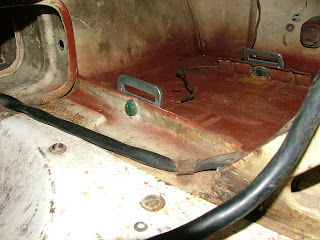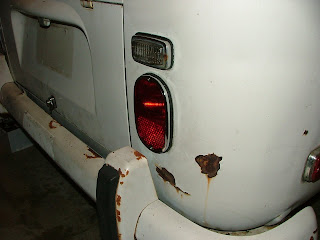After painting, I installed new engine air seals around the engine tins, I resealed and installed the fuel tank cover, and I reinstalled some of the electrical. Next I topped of the transmission fluid. It was only down a 1/2 pint or so.
I removed the starter, cleaned it up with a thinner wipe, painted it with a nice coat of flat black grill paint, cleaned up the electrical terminals, reinstalled the starter and then greased the electrical connections at the starter as well. Should be good for a long time. Someone has been in this bus doing lots of work, the starter is a re-manufactured BOSCH. Every time I uncover something, I discover it has been replaced and is in pretty good condition. I am very fortunate to have this many new parts on my bus. It is making my work much easier (and cheaper!).
Next steps: a bit more wiring, tail lights reinstalled, and then I need to make new insulation panels for the upper engine compartment. The OG (Original German) panels have warped and bowed. It just wouldn't be right to put it back together with those old crappy panels. After that, the engine goes back in. Can't wait.
















































